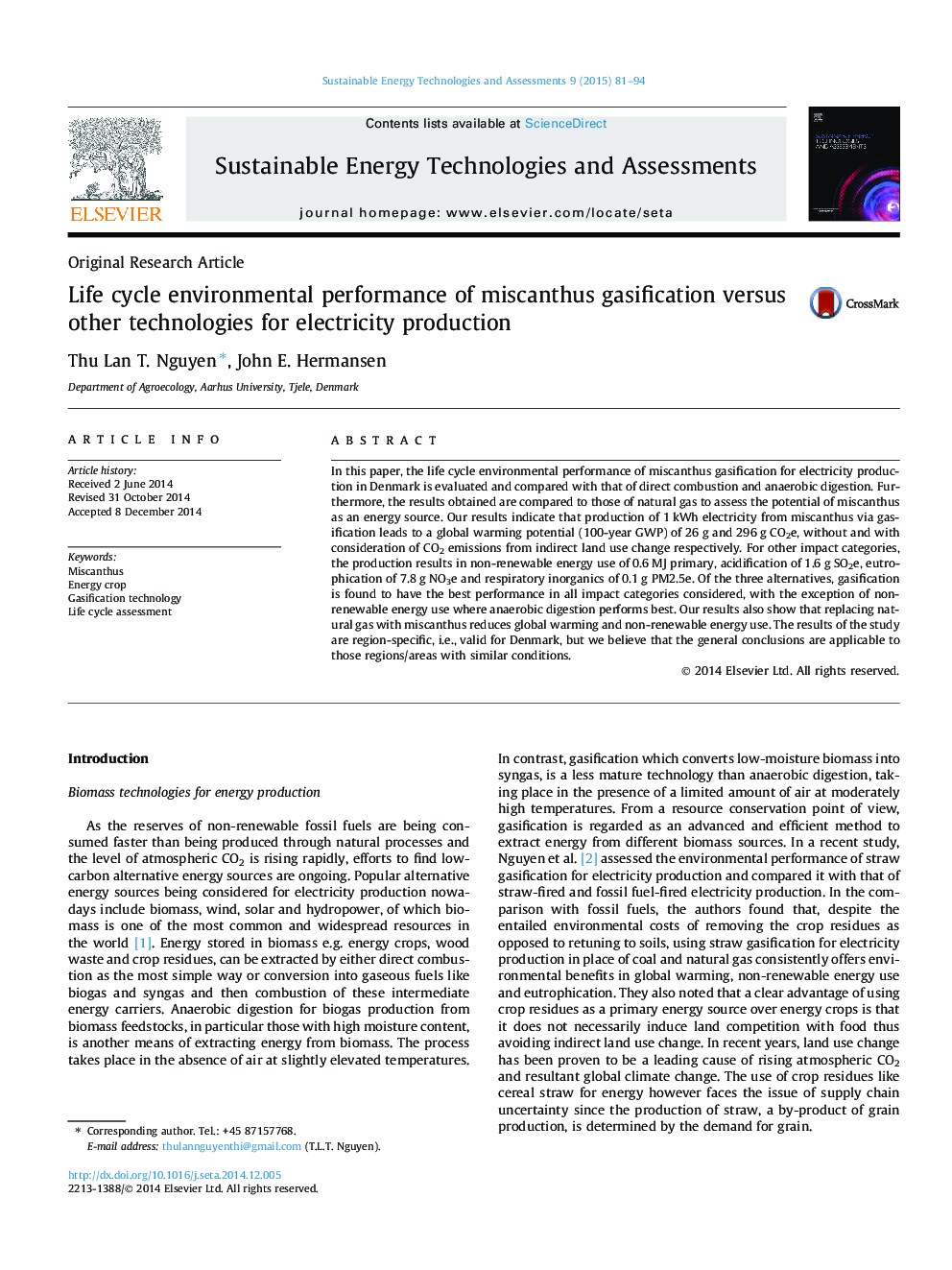| Article ID | Journal | Published Year | Pages | File Type |
|---|---|---|---|---|
| 1752700 | Sustainable Energy Technologies and Assessments | 2015 | 14 Pages |
In this paper, the life cycle environmental performance of miscanthus gasification for electricity production in Denmark is evaluated and compared with that of direct combustion and anaerobic digestion. Furthermore, the results obtained are compared to those of natural gas to assess the potential of miscanthus as an energy source. Our results indicate that production of 1 kWh electricity from miscanthus via gasification leads to a global warming potential (100-year GWP) of 26 g and 296 g CO2e, without and with consideration of CO2 emissions from indirect land use change respectively. For other impact categories, the production results in non-renewable energy use of 0.6 MJ primary, acidification of 1.6 g SO2e, eutrophication of 7.8 g NO3e and respiratory inorganics of 0.1 g PM2.5e. Of the three alternatives, gasification is found to have the best performance in all impact categories considered, with the exception of non-renewable energy use where anaerobic digestion performs best. Our results also show that replacing natural gas with miscanthus reduces global warming and non-renewable energy use. The results of the study are region-specific, i.e., valid for Denmark, but we believe that the general conclusions are applicable to those regions/areas with similar conditions.
